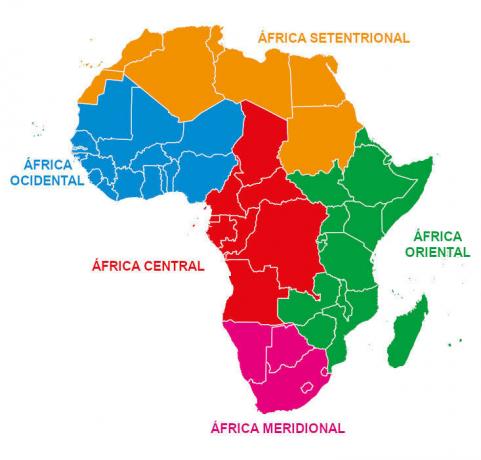The hydrosphere corresponds to every liquid part contained on the planet. The oceans are responsible for 97.2% of all water, which means that about 2/3 of the planet's surface is covered by oceans. Continental waters, on the other hand, have a much lower percentage, being found in rivers, lakes (state liquid), in glaciers (solid state, which by the way is the largest reserve of fresh water), aquifers and sheets water tables. Finally, the water contained in the atmosphere, which is in the form of vapor, gives rise to precipitation.
Water distribution in the hydrosphere
Ice caps and glacier 2.15%
Atmospheric water 0.001%
Underground water 0.62%
Surface water (rivers, lakes and biomass) 0.029%
Oceans 97.2%
Water arose from the cooling of the Earth, resulting from volcanoes that expelled various gases and water vapor that evaporated, favoring the occurrence of rain.
Water is fundamental to life, regardless of being, even because life arose in water, like bacteria, the first living beings (trilobites) and aquatic beings, which came out of the water and turned into amphibians later into reptiles and so on. against.
Water is found in physical states. The physical states of water are in liquid, solid and gaseous states.

rivers and lakes

Rivers and lakes are continental waters because they are present in emerged areas. Their formation takes place as a result of the upwelling of groundwater. However, this is not the only way a river forms, as it can originate from melting glaciers such as the Amazon River.
Rivers vary in their speed and direction, which is determined by relief elements. Therefore, it is clear that the relief is the watershed at a general and particular level.
Do not stop now... There's more after the advertising ;)
Lakes can be natural. Its origin comes from underground water springs, or even artificial ones (when man, through his knowledge and techniques, manages to materialize the production of a lake).
Rivers vary in the amount of water, that is, its ebb. This is pertinent to climatic changes during the year that will determine the floods (rainy period) and ebbs (dry period). In addition, rivers can also have their regime distinctly recognized as being perennial rivers, intense and constant flow of water without drought (river that does not drought), unlike temporary rivers that are characterized by their seasonal presence, this means that they are rivers that dry up in the dry season or drought.
Continental waters are of paramount importance to society, considering that they are suitable for human consumption and for all living beings. In the case of human consumption, water is used in multiple activities that can be listed in rural, urban, tourist use, and so on. In the countryside, it is used in irrigation, for raising animals, among others; in cities, its use is intended for homes, industries, businesses, institutions, schools; and in tourism it is a source of income, exploring the beauty of rivers and lakes.
Currently, an important reserve of fresh water is stored in solid state glaciers, its geographical location makes the temperatures always remain low, keeping them intact, except for changes relevant to human activities that modify conditions natural.
The societies of the contemporary world, regardless of the continent or country, cause impacts on water that can be divided into: industrial, domestic and rural pollution.
By Eduardo de Freitas
Graduated in Geography



